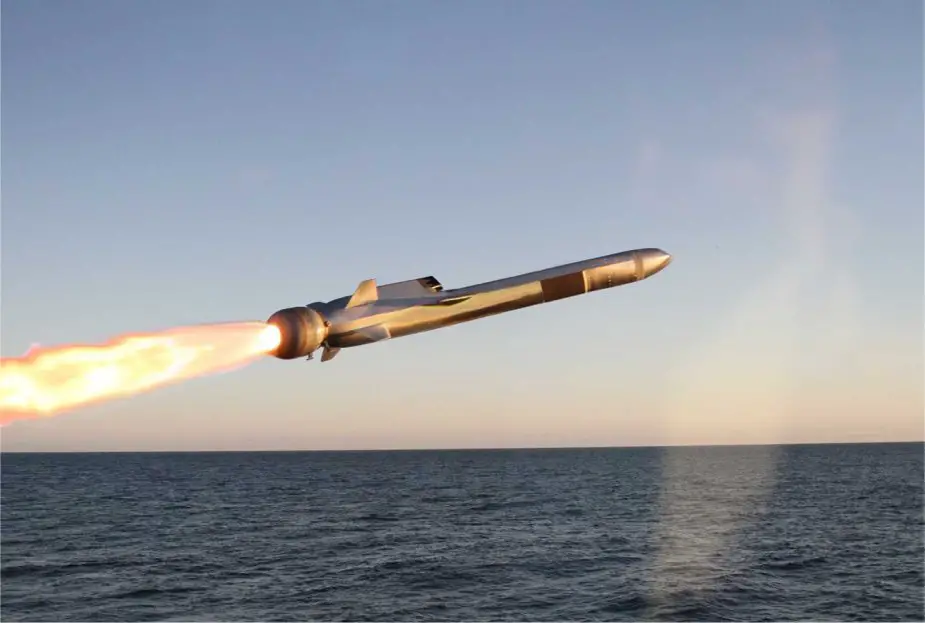Breaking news
Latvia may purchase Naval Strike Missile sooner than expected.
According to information published by TVNet on February 13, 2023, Latvia may acquire Naval Strike Missile sooner than expected due to increased military spending.
Follow Navy Recognition on Google News at this link
 Artist rendering of the Naval Strike Missile. (Picture source: Kongsberg)
Artist rendering of the Naval Strike Missile. (Picture source: Kongsberg)
The Naval Strike Missile (NSM) is a high-tech anti-ship and land-attack missile designed by the Norwegian company Kongsberg Defence & Aerospace. As of 2022, the NSM/JSM has been chosen by several countries, including Norway, Poland, Malaysia, Germany, the United States (as RGM-184), Japan, Romania, Canada, Australia, and Spain.
The NSM features advanced stealth capabilities thanks to its state-of-the-art design and composite materials. Weighing just over 400 kg (880 lb), it has a range of more than 185 km (115 mi; 100 nmi), and is suitable for both littoral and open sea scenarios.
Its high-strength titanium alloy blast/fragmentation warhead from TDW uses insensitive high-explosive and is initiated by a void-sensing Programmable Intelligent Multi-Purpose Fuze that optimizes its effect against hard targets.
The NSM is capable of flying over and around landmasses, traveling in sea skim mode, and making random maneuvers in the terminal phase, making it difficult to stop by enemy countermeasures. However, unlike the Penguin, the NSM uses bank-to-turn flight control. It has been confirmed that the NSM can also attack land targets.
The NSM uses imaging infrared (IIR) seeker and an onboard target database to independently detect, recognize, and discriminate targets at sea or on the coast. It can navigate using GPS, inertial, and terrain reference systems.
Launched into the air by a solid rocket booster that is jettisoned when burned out, the missile is propelled to its target in high subsonic speed by a turbojet sustainer engine. The multi-purpose blast/fragmentation warhead, which weighs 125 kg, impacts the target, typically a ship, at or near the water line.
When used as a coastal battery, the NSM consists of three missile launch vehicles (MLV), one battery command vehicle (BCV), three combat command vehicles (CCV), one mobile communication center (MCC), one mobile radar vehicle (MRV) with TRS-15C radar, one transport and loading vehicle (TLV), and one mobile workshop vehicle (MWV).
Each MLV carries 4 missiles and can be connected to the CCV by optical fiber or radio up to 10 km (6.2 mi) away. Up to 6 launchers with 24 missiles can be netted together at once. When installed on ships, NSMs can be deck-mounted in packs of one to twelve launchers, with a total weight that includes electronics and cabling.




























